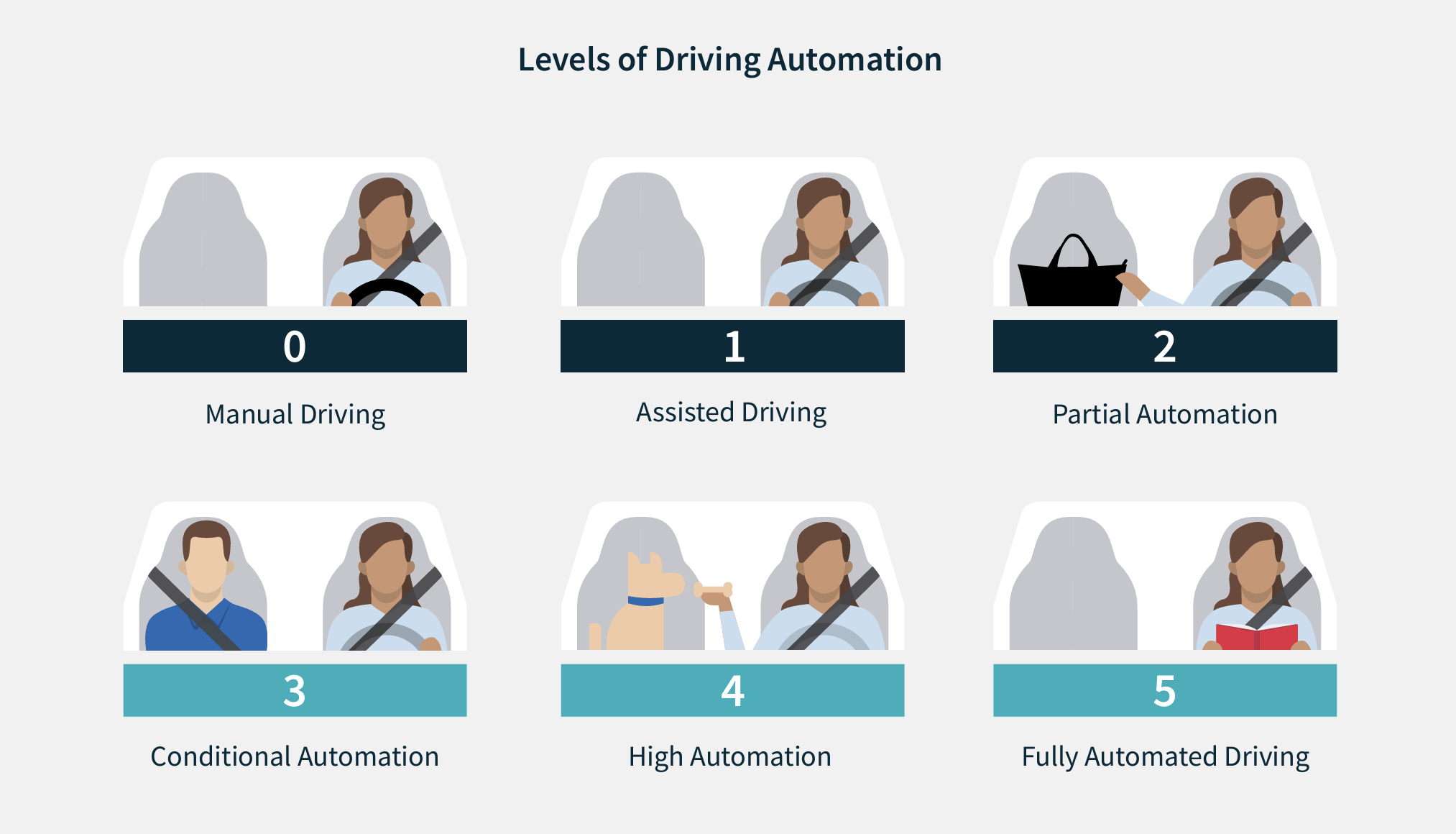
In Part I of this series, we defined and discussed the SAE Levels of Autonomy from Level 0 to Level 2. In this article, we will cover the remaining Levels of Autonomy, as well as which Level of Autonomy Torc is pursuing and why.
Rounding Out the Levels of Autonomy
Autonomous Driving Systems at Level 3 Autonomy: Conditionally Automated Driving
The SAE refers to Level 3 Autonomy as ‘conditional automation.’ It is a mode in which all aspects of driving are handled for you, but the driver must be present at all times in case an intervention request is made. A Level 3 ready autonomous vehicle is capable of driving itself in particular conditions, during which it will take control of all safety-critical systems. In proper circumstances, the ADS (Automated Driving System) completes the entire dynamic driving task and then disengages quickly upon the driver’s command. The driver is no longer obliged to constantly monitor the system or perform non-driving-related tasks while operating the vehicle. If the system prompts the driver, the driver must answer within a certain amount of time to avoid the system from disabling itself.
Autonomous Driving Systems at Level 4 Autonomy: Highly Automated Driving
Vehicles with Level 4 Autonomy are capable of driving fully autonomously in proper settings without the assistance or intervention of a human driver. If a driver takes control of the vehicle, the ADS will disengage if necessary. In some cases, the vehicle does not prompt the driver or user to take over because it is competent of handling the problem on its own. The development of commercial vehicles that can drive themselves on highways or in geofenced urban areas is likely to be realized by the end of the decade, thanks to advancements in sensor technology, high-definition mapping, more timely data, vehicle-to-vehicle connections, and off-site call centers (for dealing with uncommon risks).
Autonomous Driving Systems at Level 5 Autonomy: Fully Automated Driving
Vehicles capable of Level 5 Autonomy will be able to drive on any road that has been mapped and can be navigated by a human driver. It is sufficient for the user to specify a destination, and the vehicle will subsequently transport any occupants to their location. The system must be capable of managing all scenarios on its own and executing the entire dynamic driving task. Currently, this level of autonomy is not technologically possible. Some entrepreneurs predict the imminent development of a Level 5-capable vehicle, while more cautious industry experts are beginning to suspect that such a sophisticated system would either never be possible or would prove too costly for commercial development.
Which Level of Autonomy is Torc Working Towards?
Torc is pursuing the development of Level 4 Autonomy and autonomous driving systems for use in commercially available freight trucks. We believe Level 4 Autonomy is the safest level of autonomy for heavy-duty trucks and that it will give significant benefits in a range of areas. Level 4 trucks will contribute to safer roads and allow for more environmentally friendly transportation options. They will also increase traffic safety by employing redundant systems and various sensors capable of achieving high performance constantly, assisting in the prevention of the great majority of crashes that occur now because of human error. They may also result in enhanced efficiency and production due to increased vehicle utilization — essentially around the clock.
They will help both fleet clients and the entire economy because the competitiveness of any business is directly related to the effectiveness of its logistics and supply chain network. As Torc CSO Andrew Culhane recently stated, “I strongly believe that autonomous trucks will support economic growth throughout the nation by moving goods more efficiently and diminishing the impact of the U.S. truck driver shortage. However, it is critically important that autonomous vehicle (AV) companies approach a deep understanding and collaboration with the freight industry.”
Learn More
Read Torc’s Vehicle Safety Self-Assessment (VSSA) Report to learn more about autonomous driving systems and Torc’s self-driving trucks. It gives an overview of our safety culture, our technology, and describes how we are collaborating with industry experts to assure the safe development and commercialization of our autonomous driving systems for autonomous freight trucks.
